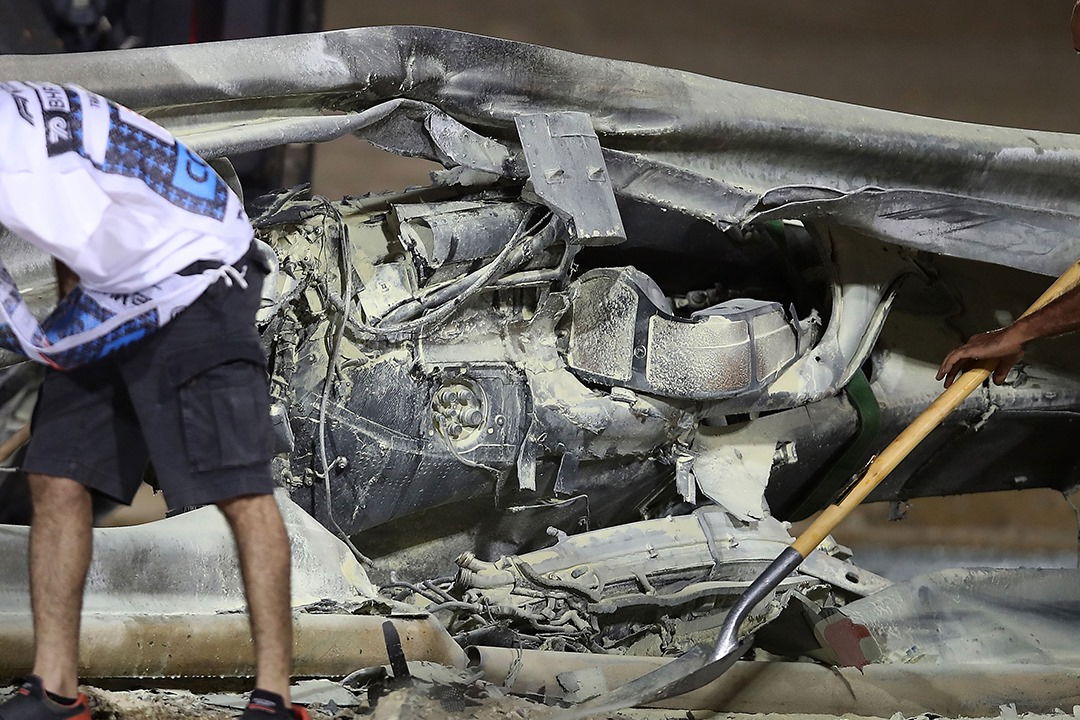

Formula 1 race director Michael Masi said there was no ‘knee-jerking’ over the barrier damage caused by Romain Grosjean’s heavy Bahrain Grand Prix accident.
The impact tore the car in half, with the monocoque prising the barrier layers apart and allowing it to be wedged inside.
Grosjean escaped the fiery aftermath with minor burns to his hands, and will miss this weekend’s Sakhir Grand Prix despite being released from hospital on Tuesday.
“The guardrail is not supposed to fail like that. I mean it’s good the cars are safer than they used to be in the past but the guardrail shouldn’t fail and the car shouldn’t catch fire in that fashion,” Vettel said.
“There are a lot of precautions so that it doesn’t fail, so I don’t know what happened there. I think it’s difficult to say at this stage but the main thing is obviously that he got out.”
Masi oversaw the barrier’s replacement with concrete blocks for the restart, and later conceded barrier damage was inevitable due to the force of the impact.
“The amount of energy that was just seen, having gone out there and looked at it all, there is only so much you can do,” Masi told Sky Sports after the race.
“But as the FIA we will look at it all, undertake a full investigation of the whole incident and what we can learn.
“Be it car safety, be it driver equipment, be it safety features around a circuit, and what we can actually learn.”
The barrier replacement took over 90 minutes, and Masi said concrete blocks were used because a replacement Armco barrier would have taken too long to install given the terrain disruption in the vicinity of the accident.
“The initial part was primarily getting the incident under control. Once that was done, effectively going into the repair phase,” Masi explained.
“I went out on site to inspect first hand what it was, and then spoke to the circuit engineers about what they had available, and what we could do.
“You have to consider each circuit, each level of terrain and so forth on its own merits… here by nature, it’s quite sandy ground and so forth.
“The first part was, effectively, ‘Okay, (available concrete barriers) would be the best, the most efficient’, but obviously the best repair that could happen at that area. And the safest, most importantly.”
The halo safety device and medical response crews were praised in the incident, with the driver himself and Ross Brawn crediting it for saving Grosjean’s life.
Masi acknowledged that while it was a ‘freak’ accident, the car’s safety structures did their job in protecting Grosjean.
“The survival cell did exactly what it is there to do, it kept the driver safe and intact. The halo did what it did, just from an initial observation,” Masi said.
“We will review the incident itself, and see if there is anything we can learn in the short term. But certainly from the barrier integrity and so forth, there is no knee-jerking to it.
“The repair that we undertook was the most efficient repair, and the best repair that we could within the situation and what we had before us.
“The Bahrain circuit and the way they got into it and undertook everything in a professional manner, it was a case of having a look at what we have, what was the best circumstance that we could do.
“But I have been involved in enough barrier repairs in my life in previous worlds, but you learn about what you can and can’t do in the situation.”



















Discussion about this post